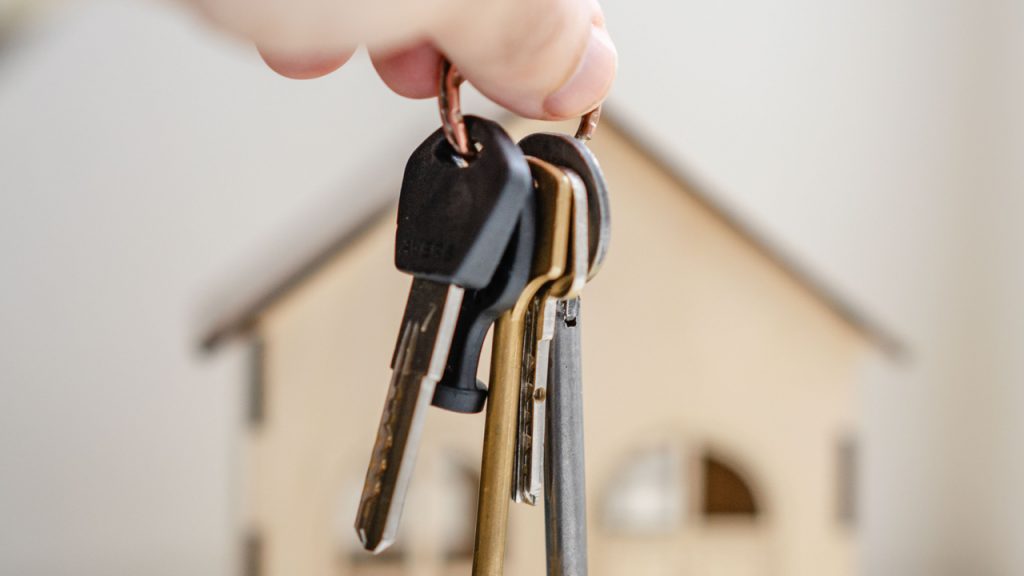Rental Property Inspection Checklist: What to Look for During Visits
What is a Rental Property Inspection?
Rental inspections, also known as property inspections, are conducted by landlords or property managers to assess the condition of a unit. These inspections play a crucial role in verifying the apartment’s state before, during, and after a tenant’s occupancy. They serve to quickly identify any lease violations or issues, such as unauthorised subletting and document damages that may impact the return of a tenant’s security deposit.
Apart from move-in and move-out inspections, landlords retain the legal right to inspect their rental properties while tenants are in residence. However, these inspections must adhere to state laws, requiring proper notification and alignment with specific reasons for the visit. State regulations may vary, with some allowing routine inspections and others stipulating specific reasons or intervals between inspections.
Regular, often annual, inspections are common among landlords. Additionally, it’s customary for landlords to conduct thorough inspections when a tenant vacates the property. The objective of these inspections is to ensure compliance with state laws, identify any issues affecting the property’s condition, and uphold the landlord’s responsibilities in maintaining a safe and habitable living space.
Things that Landlords should Assess During Rental Property Inspections
During a rent inspection, landlords should focus on several key areas to ensure the property’s upkeep and identify potential issues. The primary objective is to catch problems early on, making repairs more manageable and cost-effective. Here are essential aspects landlords should pay attention to:
- Overall Condition: Begin the inspection by conducting a comprehensive assessment of the property’s overall condition. Scrutinise for signs of wear and tear, damage, or deterioration, encompassing both the exterior and interior of the building, along with any common areas, if applicable.
- Damages: Thoroughly inspect for any damages to the property, both major and minor. Identifying issues early can prevent more extensive problems and reduce repair costs. Any damages found after a tenant moves out can be deducted from the security deposit.
- Safety and Security: Prioritise the safety and security of the property. Thoroughly examine for potential safety hazards, such as loose handrails, malfunctioning locks, or trip hazards. Ensure the functionality of smoke detectors and carbon monoxide detectors.
- Plumbing and Electrical Systems: Systematically inspect the plumbing and electrical systems for any issues. Look out for leaks, drips, or water damage: test faucets, toilets, and showers for proper functionality. Examine electrical outlets, switches, and lighting fixtures for problems like exposed wires or malfunctioning components.
- Heating and Cooling Systems: Assess the heating and cooling systems to guarantee they are operational and well-maintained. Replace air filters as necessary and ensure ducts are clean. Verify the proper functioning of thermostats.
- Appliances: Thoroughly test all appliances provided with the rental property, including the stove, refrigerator, dishwasher, washer, and dryer. Confirm their cleanliness and ensure they are in good working order.
- Structural Integrity: Conduct a detailed examination of the walls, ceilings, and floors for any cracks, water damage, or structural issues. Look for signs of pests, such as termites or rodents, that could compromise the property’s structural integrity.
- Paint and Finishes: Inspect for chipped paint or damage to walls and ceilings. Evaluate the condition of flooring, encompassing carpet, hardwood, and tile.
- Windows and Doors: Ensure that windows and doors open and close properly and that locks are functional. Check for drafts or air leaks around windows and doors.
- Exterior Maintenance: Thoroughly inspect the property’s exterior, including the roof, siding, gutters, and landscaping. Ensure that the property’s curb appeal is well-maintained.
- Tenant Compliance: Verify tenant compliance with the terms of the lease agreement, including adherence to restrictions on pets, smoking, or any other specific clauses. Confirm that the number of occupants aligns with the lease agreement. This holistic approach ensures a comprehensive evaluation of the property’s condition and tenant compliance during the inspection.
Optimal Duration for Landlord Property Inspections: What's Reasonable?
The duration of a landlord inspection can vary based on factors such as the size of the property, the thoroughness of the inspection, and the specific items being assessed. Generally, a standard rental property inspection may take anywhere from 30 minutes to a couple of hours.
Here’s a breakdown of potential timeframes:
1. Small Apartment or Single-Family Home
A relatively small unit or house may take around 30 minutes to an hour for a thorough inspection.
2. Medium to Large-Sized Property
For properties with more rooms or additional features, inspections may take between 1 to 2 hours.
3. Detailed or Periodic Inspection
If the inspection is exceptionally detailed, covering a comprehensive checklist, or if it’s a periodic (e.g., annual) inspection, it may take longer, possibly exceeding 2 hours.
4. Factors Influencing Time
The condition of the property, the presence of tenants, and the complexity of systems (plumbing, electrical, etc.) can also impact the inspection duration.
Landlords need to communicate the estimated duration with tenants beforehand to ensure cooperation and to minimise any inconvenience. Additionally, being well-prepared with a checklist can help streamline the inspection process, making it more efficient for both parties involved.
Prohibited Actions for Landlords During Property Inspections
Landlords are subject to specific regulations outlined in the Residential Tenancies and Rooming Accommodation Act 2008. Here are some aspects of what landlords cannot do during a property inspection in Queensland:
- Enter Without Notice: Landlords must provide tenants with proper notice before conducting a routine inspection. The notice period is generally seven days.
- Excessive Inspections: Landlords should conduct inspections sparingly. Routine inspections are typically limited to a maximum of four times in 12 months unless both parties agree otherwise.
- Enter Unreasonably: Landlords must refrain from entering the property unreasonably or at inconvenient times. Entry should occur during reasonable hours and with the tenant’s consent or after providing proper notice.
- Privacy Violation: Landlords must respect the tenant’s privacy during inspections. They should not invade personal spaces or go through the tenant’s belongings.
- Retaliation: Landlords are prohibited from using inspections as a form of retaliation against tenants who exercise their legal rights or file complaints.
- Beyond Lease Agreement Scope: Landlords should limit inspections to the scope defined in the lease agreement or to purposes outlined in the Residential Tenancies and Rooming Accommodation Act. Conducting assessments for reasons unrelated to the tenancy is not allowed.
Landlords in Queensland must adhere to these regulations to ensure compliance with the law and maintain positive relationships with tenants. Landlords should stay informed about any changes in legislation and seek legal advice if needed to ensure they are meeting their obligations under Queensland’s residential tenancy laws.
Property Inspections under Queensland Law
In Queensland, Australia, residential tenancy laws are governed by the Residential Tenancies and Rooming Accommodation Act 2008. Here are some key points related to property inspections under Queensland law:
- Notice Requirements: Landlords are generally required to provide tenants with a minimum notice period before conducting a routine inspection. The notice period is typically seven days.
- Frequency of Inspections: Landlords are allowed to conduct routine inspections, but the frequency should be reasonable. Generally, reviews are limited to up to four times in 12 months.
- Access to the Property: Landlords must respect the tenant’s right to privacy. They can only enter the property during reasonable hours and with the tenant’s consent or after providing proper notice.
- Scope of Inspection: Inspections should be limited to necessary purposes, such as assessing the property’s condition and ensuring compliance with the lease agreement. Landlords should not conduct checks for reasons unrelated to the tenancy.
- Emergency Entry: Landlords can enter the property without notice in case of an emergency or if the tenant agrees to the entry without prior notice.
- Protection of Tenant’s Privacy: Landlords must take care not to invade the tenant’s privacy during inspections. They should avoid going through personal belongings or inspecting areas considered the tenant’s private space.
Landlords in Queensland need to be familiar with the specific provisions outlined in the Residential Tenancies and Rooming Accommodation Act 2008 and any subsequent amendments. Seeking legal advice or consulting the Residential Tenancies Authority (RTA) in Queensland can provide more detailed and up-to-date information on property inspection regulations in the region.
How to Notify Tenants About Rental Inspections
Notifying tenants about rental inspections is a crucial aspect of respecting their privacy and complying with legal requirements. Here’s a guide on how to effectively communicate and inform tenants about upcoming examinations:
- Review Lease Agreement: Before initiating any notifications, review the lease agreement to understand the terms and conditions related to inspections, including required notice periods.
- Check Local Laws: Familiarise yourself with local and state laws governing rental inspections, as they may specify the minimum notice period and other requirements.
- Choose the Right Notification Method: Determine the most effective communication method based on your tenants’ preferences. Standard methods include written notices, emails, or text messages.
- Provide Ample Notice: Generally, landlords are required to give tenants sufficient notice before conducting an inspection. In Queensland, Australia, for instance, the notice period is typically seven days for routine inspections.
- Use Formal Language: Craft a formal and explicit notification, including essential details such as the date and time of the inspection, the purpose of the visit, and any specific instructions for the tenants.
- Specify Entry Reason: Clearly communicate the reason for the inspection, whether it’s a routine check of the property’s condition, repairs, or any other legitimate purpose.
- Offer Flexibility: Provide tenants with options for scheduling the inspection within a reasonable timeframe. This shows respect for their time and commitments.
- Be Mindful of Privacy: Emphasise your commitment to respecting the tenants’ privacy during the inspection, and assure them that the visit will be conducted professionally and efficiently.
- Include Contact Information: Include your contact information in case tenants have questions or concerns. This encourages open communication and transparency.
- Document the Notification: Keep records of the notification, including the method used, the date it was sent, and any responses received from the tenants.
10 Rental Inspections Tips for Landlords in Queensland
Conducting adequate rental property inspections is crucial for maintaining the property’s condition and ensuring a positive landlord-tenant relationship. Here are ten tips for landlords when conducting rental inspections:
- Provide Ample Notice: Adhere to legal requirements and provide tenants with sufficient notice before conducting an inspection. In Queensland, Australia, for example, the typical notice period for routine inspections is seven days.
- Choose a Convenient Time: Schedule inspections at times that are convenient for tenants whenever possible. This can foster a cooperative relationship and reduce inconvenience for tenants.
- Be Professional and Courteous: Approach inspections with professionalism and courtesy. Communicate the purpose of the inspection clearly and assure tenants that their privacy will be respected.
- Use a Checklist: Develop a comprehensive inspection checklist to ensure that all essential areas of the property are assessed. This can help you stay organised and thorough during the inspection.
- Document the Property’s Condition: Take detailed notes and photographs during the inspection to document the property’s condition. This documentation can be valuable for addressing maintenance issues and assessing any changes over time.
- Check for Safety and Compliance: Pay special attention to safety aspects, such as smoke detectors, carbon monoxide detectors, and other safety features. Ensure that the property complies with relevant regulations and standards.
- Communicate Findings Clearly: After the inspection, communicate any findings to the tenants clearly and respectfully. Provide feedback on positive aspects and address any areas that require attention.
- Address Maintenance Promptly: If maintenance issues are identified during the inspection, address them promptly. Timely maintenance contributes to tenant satisfaction and helps prevent further damage.
- Build a Positive Relationship: Use inspections as an opportunity to build a positive relationship with your tenants. Be approachable, responsive to concerns, and open to feedback.
- Stay Informed About Regulations: Stay updated on local and state regulations related to property inspections. Being aware of legal requirements ensures that your inspection practices align with the law.
Remember that clear communication and a respectful approach are essential to successful rental property inspections. By following these tips, landlords can maintain their properties effectively, foster positive tenant relationships, and address any issues in a timely manner.
Final Thoughts on Rental Inspections
As a landlord, the demands of managing a property can be overwhelming, especially when it comes to the crucial aspect of rental inspections. These inspections serve as a linchpin for a thriving property management business, fostering a symbiotic relationship with tenants. From a business perspective, the aim is to maintain units in optimal condition, ensuring they remain attractive to future renters.
However, the time and effort required for performing inspections can be substantial. This is where a professional property management service like Mackay City Property comes into play. Entrusting us with the responsibility of inspections, landlords can free up valuable time and resources. We are dedicated to ensuring your units are well-maintained, attractive to potential tenants, and in compliance with all necessary standards.
More than just a convenience, Mackay City Property understands the delicate balance required for a positive landlord-tenant relationship. Tenants seek a responsive and considerate landlord – one who prioritises their privacy while actively addressing any concerns. By choosing us, you not only streamline the inspection process but also demonstrate your commitment to creating a positive and cooperative atmosphere.
Mackay Suburbs - A to Z
Here is a list of the primary suburbs that encompass the City of Mackay:
Mackay City Property Real Estate Agency Mackay Suburbs Index
Connect with our Mackay's Trusted Property Specialist Today!
Straightforward advice, no fluff. You ask the property question, we’ll provide the answer.
Disclaimer: The information provided on this blog is intended for general informational purposes only. While we strive to present information in good faith, we do not consider specific situations, facts, or circumstances. Therefore, we make no representation or warranty, whether express or implied, regarding the accuracy, adequacy, reliability, validity, availability, or completeness of the information presented.
This blog may include links to external sites or content from third parties. We do not investigate or monitor such external links for accuracy, adequacy, validity, reliability, availability, or completeness. Consequently, we cannot be held liable or responsible for any information contained therein.



